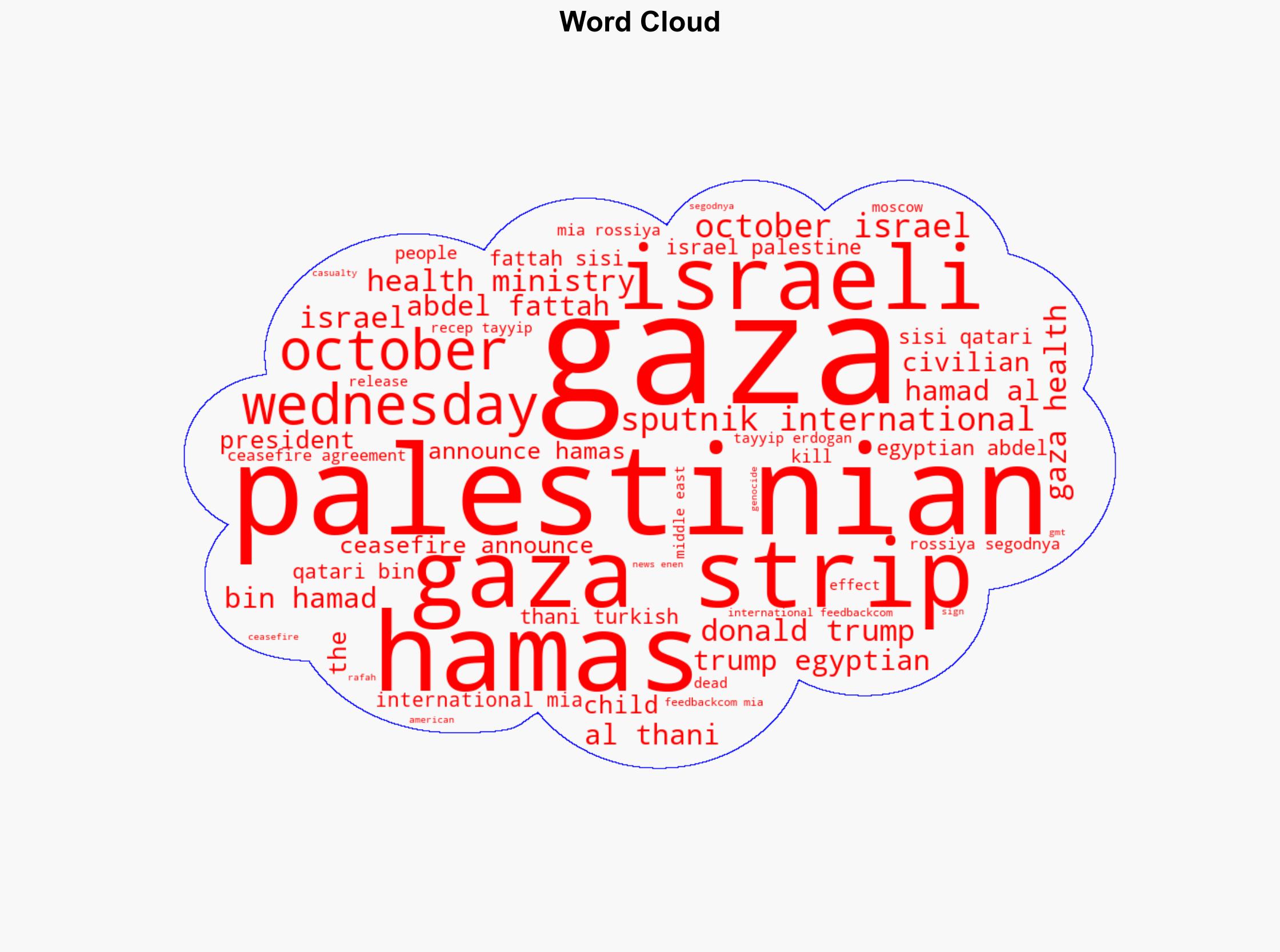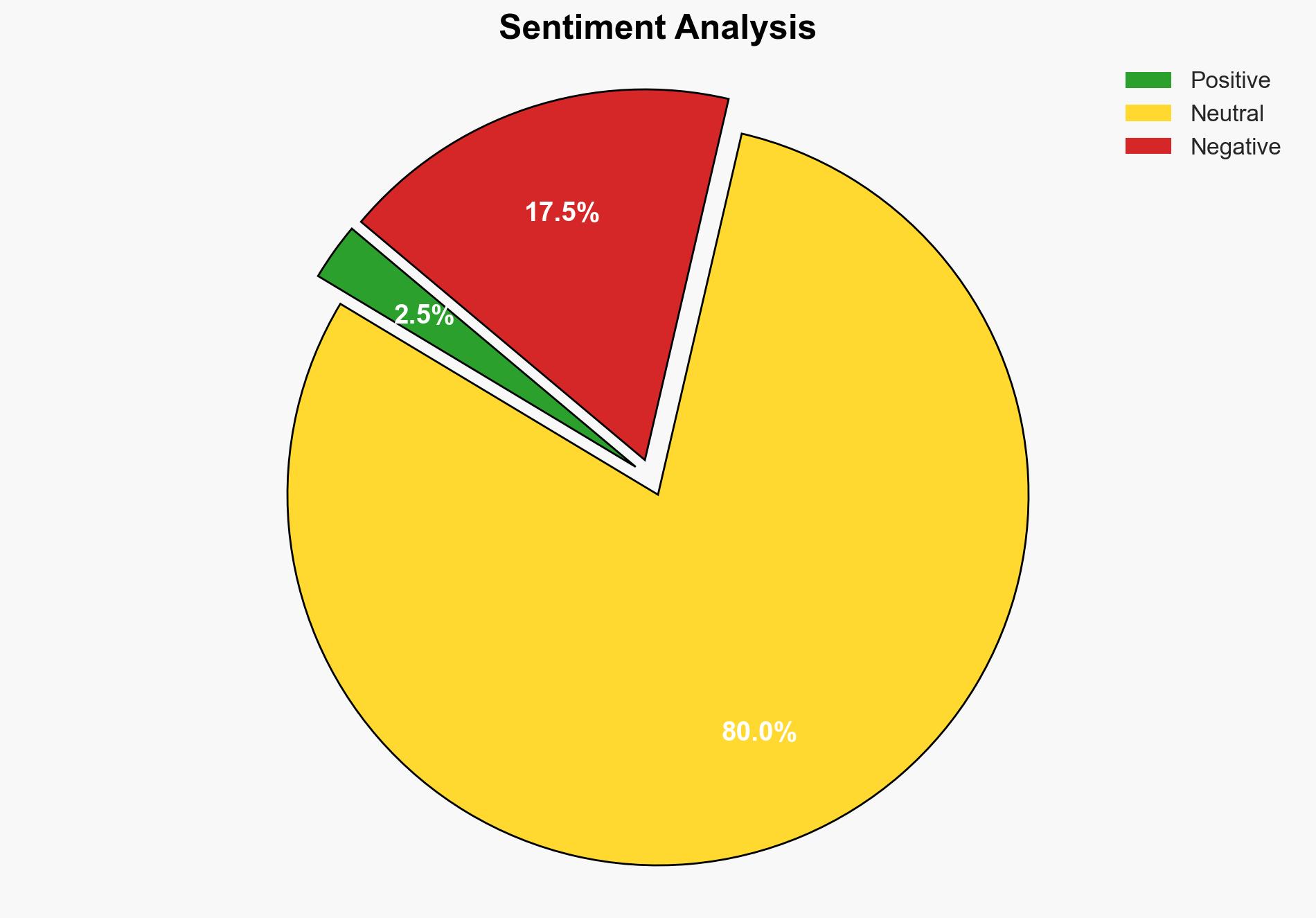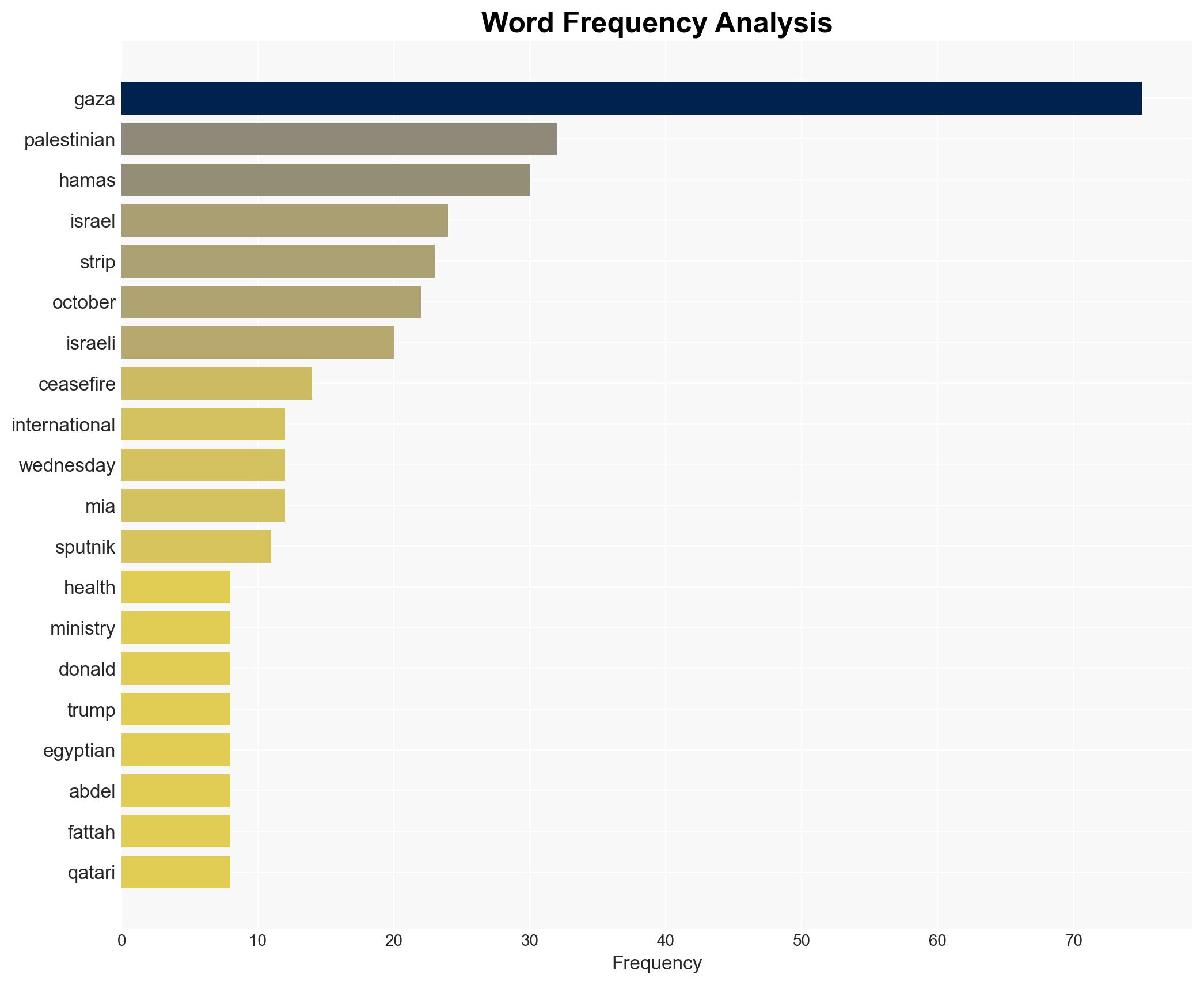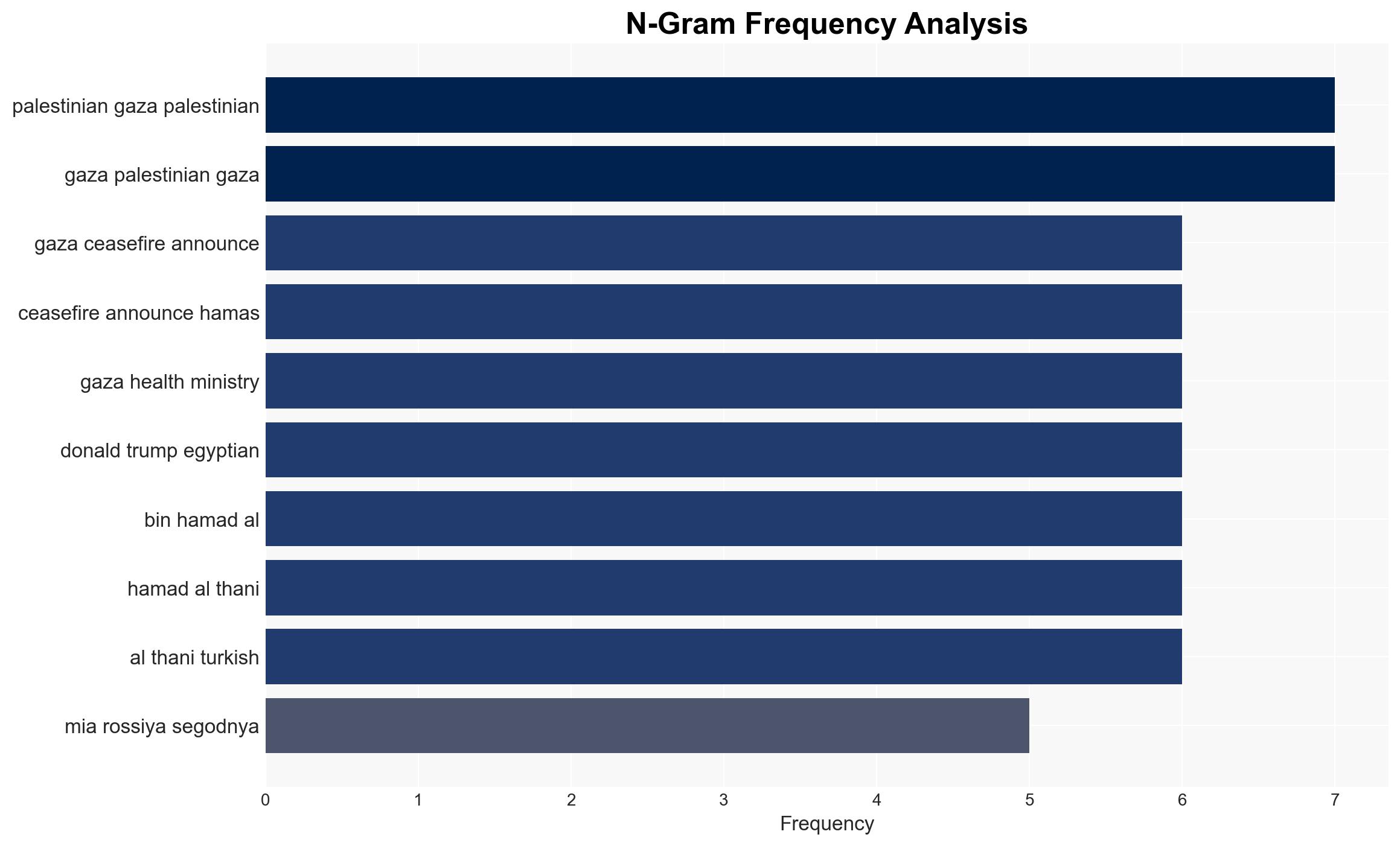Over 300 People Die in Gaza Strip Since Ceasefire Announced – Hamas – Sputnikglobe.com
Published on: 2025-11-20
AI-powered OSINT brief from verified open sources. Automated NLP signal extraction with human verification. See our Methodology and Why WorldWideWatchers.
Intelligence Report:
1. BLUF (Bottom Line Up Front)
There is a moderate confidence level that the recent deaths in the Gaza Strip, despite a ceasefire agreement, are a result of continued Israeli military operations against perceived threats from Hamas. The most supported hypothesis is that the ceasefire is fragile and not fully adhered to by both parties. Recommended actions include diplomatic engagement to reinforce the ceasefire and monitoring for compliance by both sides.
2. Competing Hypotheses
Hypothesis 1: The deaths in Gaza are due to Israeli military operations targeting Hamas militants who are perceived as violating the ceasefire.
Hypothesis 2: The deaths are the result of internal Palestinian conflicts or accidents, which are being attributed to Israeli actions for political leverage.
Hypothesis 1 is more likely given the historical context of Israeli-Hamas conflicts and the reported Israeli strikes. However, the lack of independent verification and potential bias in reporting from sources like Sputnik raises uncertainty.
3. Key Assumptions and Red Flags
Assumptions include the belief that both parties are acting in good faith to uphold the ceasefire, and that reported casualties are accurately attributed. Red flags include potential bias in Sputnik’s reporting and the lack of independent verification of events. Deception indicators may include exaggerated casualty figures or misattribution of incidents to influence international opinion.
4. Implications and Strategic Risks
The continuation of hostilities could lead to a breakdown of the ceasefire, increasing regional instability. There is a risk of escalation into broader conflict, drawing in regional actors and affecting global political dynamics. Economic impacts could include disruptions in trade and aid to the region. Information warfare could intensify, with both sides seeking to control the narrative.
5. Recommendations and Outlook
- Engage diplomatically with both Israel and Hamas to reinforce the ceasefire terms and ensure compliance.
- Deploy independent observers to verify ceasefire adherence and report unbiased casualty figures.
- Best-case scenario: Ceasefire holds, leading to a reduction in hostilities and humanitarian relief.
- Worst-case scenario: Full-scale conflict resumes, with significant regional and international ramifications.
- Most-likely scenario: Sporadic violations continue, requiring ongoing diplomatic and monitoring efforts.
6. Key Individuals and Entities
Donald Trump, Abdel Fattah Sisi, Tamim bin Hamad Al Thani, Recep Tayyip Erdogan
7. Thematic Tags
Regional Focus, Middle East, Israel-Palestine Conflict, Ceasefire, Regional Stability
Structured Analytic Techniques Applied
- Causal Layered Analysis (CLA): Analyze events across surface happenings, systems, worldviews, and myths.
- Cross-Impact Simulation: Model ripple effects across neighboring states, conflicts, or economic dependencies.
- Scenario Generation: Explore divergent futures under varying assumptions to identify plausible paths.
Explore more:
Regional Focus Briefs ·
Daily Summary ·
Support us





